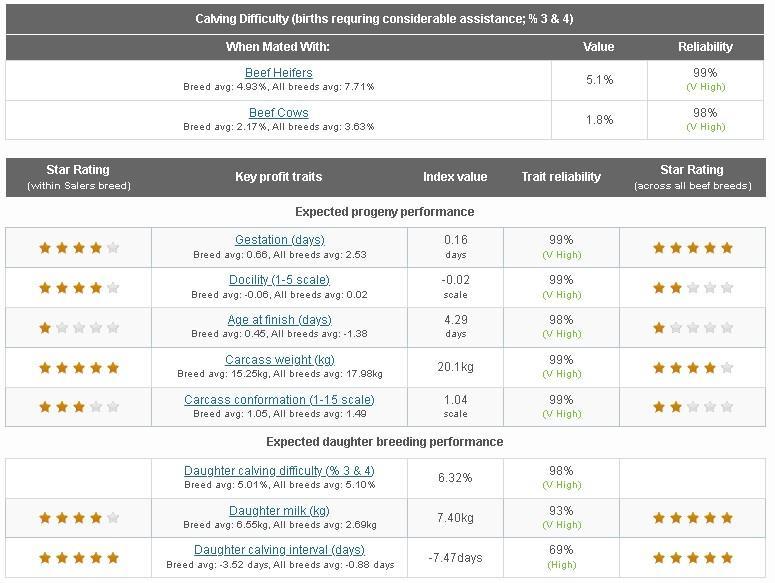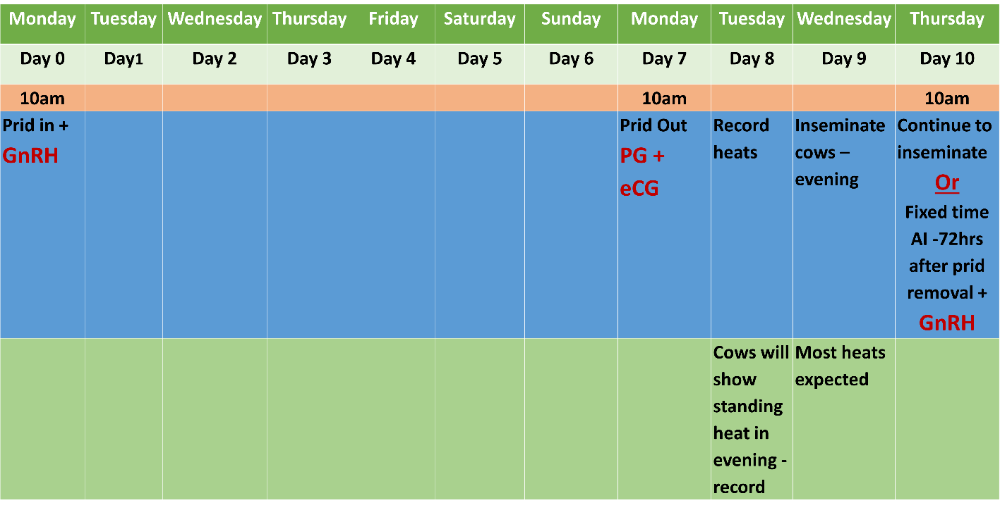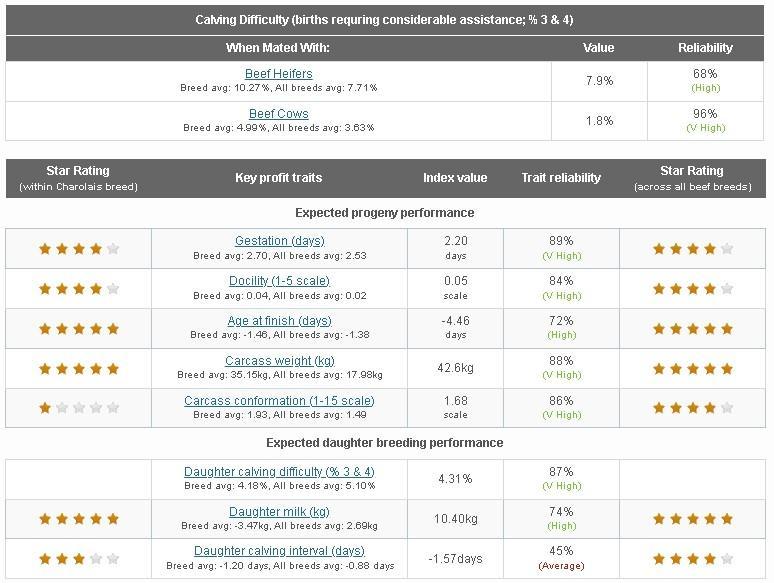Plans for spring 2024
- Preparation for the breeding season
- New stock bull purchased
- AI bull selection
James changed the calving season for his herd back in 2023 to match it to grass growth on his farm. This year he really enjoyed the break between Christmas and when calving started in early February so he plans to continue it for this year. Breeding will start on 26th April and finish on 5th July which amounts to 10 weeks. So what will he be doing to prepare for it?
James has selected the same AI bull for his heifers as he used in 2023, SA4604. He is very happy with the calves born to date who also have good maternal genetics if he wishes to keep replacement heifers from them, but are still good for carcass weight. Most importantly, his heifers have calved him at 24 months of age with no difficulty. He has a replacement value of €236, a heifer calving difficulty of 5.1% at 99% reliability, is +20.1kg on carcass weight, +7.4kg on daughter milk and -7.47 days on daughter calving interval.

Figure 1: Eurostar figures for Knottown Roy, SA4604 (Source: ICBF)
As James is working off farm in a job that involves shift work, he finds heat detection challenging when trying to AI. Therefore he tried synchronising the heifers last year and found it worked well. This year he has selected 6 heifers and 6 cows to synchronise when they are over 35 days calved. He plans to start the programme so that they will be due for AI in the first week of the breeding season. A recommended protocol for heifers is outlined in the Figure below. Due to James’s time constraints he will be implementing the cow synchronisation programme for both the heifers and cows in consultation with his vet.

Figure 2: Synchronisation protocol for heifers

Figure 3: Synchronisation protocol for cows
James decided to select a different AI bull for the cows and chose CH5980, Jalabert. He has a replacement index of €170 and a terminal index of €162 and is only 1.8% on cow calving difficulty at 96% reliability. His carcass weight figure is excellent at 42.6kg and he is 1.68 on carcass conformation. He is also strong on daughter milk at +10.4kg and is -1.57 days on daughter calving interval.

Figure 4: Eurostar breakdown for CH5980, Jalabert (Source: ICBF)
James completed his profit monitor for 2023. He has since been analysing the ‘cattle detailed’ report for his farm as follows:
1. Output/LU
The figure represents the kilograms of beef produced per livestock unit on the farm. This is impacted by everything that affects weight gain in the herd – the cow fertility, bull fertility, mortality, genetics, nutrition at grass, winter performance, ration fed, animal health and calving spread. The target for a suckler herd is >350 kg/LU and >500kg/LU for a non-suckling farm. James’s figure for 2023 was 305 kg/LU which is back on last year’s figure of 331 kg/LU so he will be aiming to increase that this year. This was partially attributed to the yearlings that were positive for TB and had to be sold at light weights.
2. Stocking rate
The farm is stocked at 1.62 LU/ha. James plans to increase this by 2026 to a maximum of 2 LU/ha so that he will be operating a 30 cow suckler to beef herd. This will mean that he won’t have to buy in any weanlings on the farm to graze on the out farm as he will be breeding enough cattle within the herd to manage grass there. He is expecting that this will reduce the vet bill on the farm and insulate him against higher weanling prices in the autumn, while also helping with cash flow throughout the year. However he will be focusing strongly on increasing the output/LU as he increases stocking rate.
3. Gross output
The gross output figure is calculated from cattle sales minus cattle purchases and add/subtract any changes to the inventory. James had a gross output figure of €1427/ha which is the main ‘money in the pot’ to cover his variable and fixed costs. This has increased by €246/ha on the 2022 gross output figure.
4. Variable costs
The 3 biggest expenses on conventional drystock farms are purchased concentrate, fertiliser and contractor costs, and James’s farm is no different. The biggest costs for the year were:
At €1061/ha the variable costs amount to 74% as a percentage of the gross output which is well above the target of 50%. However 2023 was James’s first year finishing cattle and the ration bill was less than 2022 due to excellent quality silage. He also made excess silage in 2023 which he can carry into 2024 and make fertiliser savings on this year.
5. Gross Margin
This is the gross output figure minus variable costs and leaves James with a gross margin of €367/ha, at an increase of €328/ha since 2022 which is a massive improvement, especially considering the challenging year that James had with a TB breakdown in the herd and expensive tractor repairs. Fixed costs such as depreciation, hired labour, machinery running & repair, car, phone, electricity, repairs and maintenance, insurance and professional fees are then subtracted from this figure to give a net profit and then direct payments are added onto this.
James’s focus for 2024 will be to increase the output/LU and simultaneously reduce his variable costs this year.